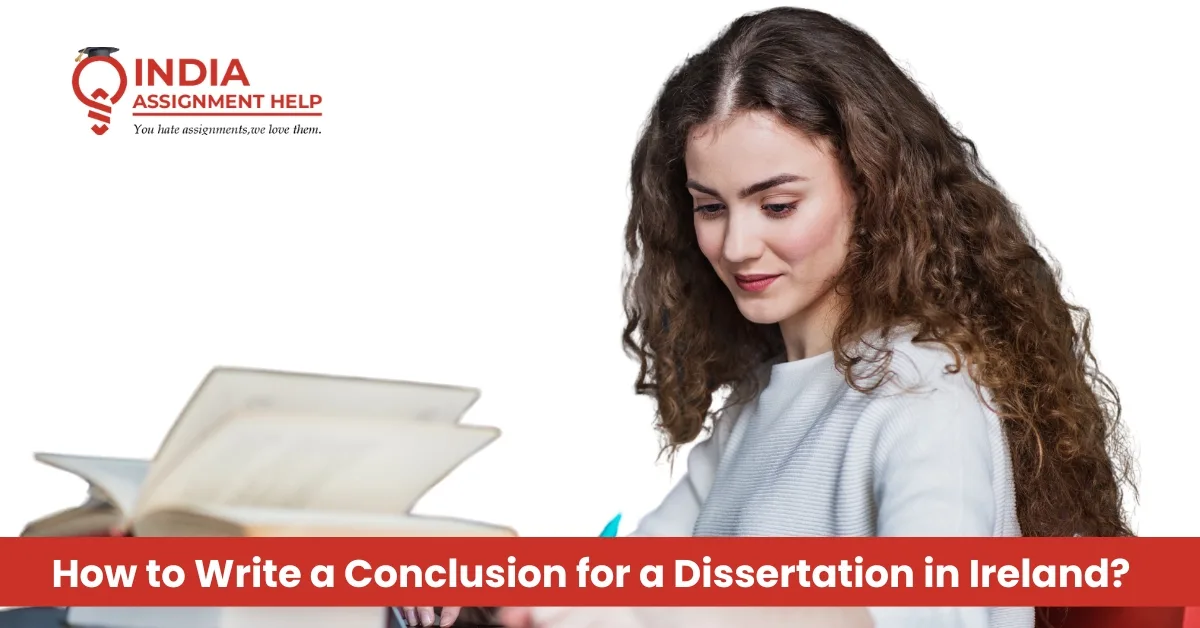How to Write a Conclusion for a Dissertation in Ireland?

Concluding your dissertation is a significant achievement. It is the point where you bring together months of research and show your examiners the value of your work. Many students find this part challenging, unsure how to start or what to include to make it truly impactful.
In Ireland, writing a strong dissertation conclusion is about more than simply summarising earlier chapters. It should deliver a clear and convincing final statement that ties everything together. A well-crafted conclusion can turn a good dissertation into an outstanding one. If you feel uncertain, Professional Dissertation Help can provide expert guidance.
Purpose of a Dissertation Conclusion in Ireland
Unlike the introduction, which sets the stage, your conclusion is where you:
- Revisit your research questions and show how you answered them.
- Summarise your main findings without repeating entire sections.
- Discuss the implications of your work in academic and practical terms.
- Suggest directions for future research.
- Leave a strong, lasting impression on your reader.
Think of it as the closing argument in a trial; you’ve presented your evidence throughout the dissertation, and now it’s time to make your case clear and persuasive.
Placing the Conclusion in the Dissertation Structure
Before writing your conclusion, it’s important to understand its place in the overall dissertation structure. Most Irish dissertations follow this format:
- Title Page
- Abstract
- Acknowledgements
- Table of Contents
- Introduction
- Literature Review
- Methodology
- Findings & Analysis
- Discussion
- Conclusion
- References
- Appendices
The conclusion comes right before your references and after your discussion chapter. While the discussion often interprets findings in detail, the conclusion distills those insights into a final, powerful message.
Steps to Write a Strong Dissertation Conclusion
- Restate your research aims and objectives in a fresh way that reflects your research journey.
- Summarise your key findings in three to five main points that directly answer your research questions.
- Discuss the significance of your results, whether for academic theory, policy, or practical applications.
- Acknowledge any limitations such as time, resources, or sample size, to show critical awareness.
- Suggest future research areas that could build on your work.
- End with a memorable closing statement that reinforces the importance and value of your research.
Examples of Dissertation Conclusions
Looking at dissertation conclusion examples can help you understand structure and tone. Here’s a sample from an Irish business dissertation:
This research has revealed that digital marketing strategies, when tailored to local audiences, significantly enhance consumer engagement for small businesses in Ireland. These findings not only align with existing literature but also offer new insights for SMEs seeking to expand their digital presence. Future research could explore sector-specific approaches to better understand niche market opportunities.
Best Practices for Concluding a University Dissertation
If you’re still unsure how to conclude a university dissertation, follow these golden rules:
- Be concise: Avoid long, repetitive paragraphs.
- Stay relevant: Only include points that link to your research questions.
- Maintain a formal tone: Your conclusion should reflect academic professionalism.
- Don’t introduce new data: All evidence should already be in earlier chapters.
Common Mistakes in Dissertation Conclusions
Students often make errors that weaken their final chapter. Some common mistakes in dissertation conclusions include:
- Writing a conclusion that’s too short or too long.
- Repeating the introduction word-for-word.
- Ignoring the bigger picture and failing to show the study’s impact.
- Using overly complex language that confuses the reader.
If you’ve tried different approaches but your conclusion still lacks clarity or impact, working with Dissertation Writing Services can make a difference. They can help you refine your arguments, adjust the tone, and ensure your conclusion flows naturally from your discussion chapter.
The Role of Tone and Language in a Dissertation Conclusion
Your conclusion should sound confident, objective, and professional. Use precise, clear language that matches the academic tone of your dissertation. Avoid casual expressions, unsupported personal opinions, or sentences that sound uncertain. Every line should reinforce your expertise and the value of your research. A balanced tone not only strengthens your conclusion but also leaves examiners with a positive final impression.
University Guidelines for Dissertation Conclusions in Ireland
Irish universities often have specific guidelines on what to include in a conclusion. For example:
- University College Dublin expects students to show critical evaluation.
- Trinity College Dublin emphasizes research contributions to the field.
- The National University of Ireland, Galway recommends clear recommendations for future work.
Always check your department’s dissertation handbook before writing.
Learning from Dissertation Conclusion Examples
Studying high-scoring dissertations in your field can be one of the most effective ways to understand how to write a strong conclusion. Pay close attention to how these examples freshly restate research objectives, how they summarise the most important findings without overloading the reader, and how they naturally include recommendations.
Notice the balance between confidence and humility, as well as how the authors highlight the significance of their work. Word count is also important. If the conclusion is too short, it can appear incomplete, while an overly long one may lose focus. Looking at examples from your specific subject area is especially helpful because each field has its own academic writing style and expectations.
Ensuring a Smooth Transition from Discussion to Conclusion
Going directly from the discussion to the conclusion can give the impression that your dissertation is disjointed or incomplete. To prevent this, start your conclusion off in a very short sentence that connects to what you said in your discussion. For instance: “Based on the interpretations set out in the last chapter, in this section we summarize the principal results and broader implications.”
Including this type of linking sentence demonstrates to the reader that your argument runs logically from beginning to end. Repeating some of the most important words or ideas in what you've been discussing assists in creating a feeling of coherence. A smooth link assists in making the examiner see your dissertation as one overall, well-structured bit of work, as opposed to disjointed, unrelated individual chapters.
Editing and Refining Your Dissertation Conclusion
Once you’ve drafted your conclusion:
- Read it aloud to check for flow.
- Ensure all sentences are clear and concise.
- Ask a peer or mentor to review it.
- Make sure your primary keyword (“how to write a conclusion to a dissertation in Ireland?”) appears naturally at least once.
When to Seek Professional Dissertation Help
If your conclusion still does not feel right after several attempts, consider asking for help from a professional. A qualified academic editor or subject expert can polish your wording, make your ideas clearer, and ensure your conclusion fits well with the rest of your dissertation.
Services like India Assignment Help offer tailored academic advice on structure, tone, and presentation, helping you create a conclusion that leaves a lasting mark on your examiners.
Final Checklist Before Submitting Your Dissertation
Think about these questions before submitting your dissertation conclusion:
- Have I answered my research questions?
- Is the conclusion free from new data or irrelevant information?
- Does it reflect my original aims and objectives?
- Have I proofread it for clarity and grammar?
Conclusion
Ireland’s final dissertation chapter isn’t reserved for repeating what you have already stated. It’s where you get to talk about why what you have done counts and show that what you have found makes sense.
If you adhere to the right format, learn from well-presented examples, steer clear of common mistakes, and bear in mind what you set out to do, you can create a dissertation conclusion that strengthens and clarifies what you have written as a whole.





